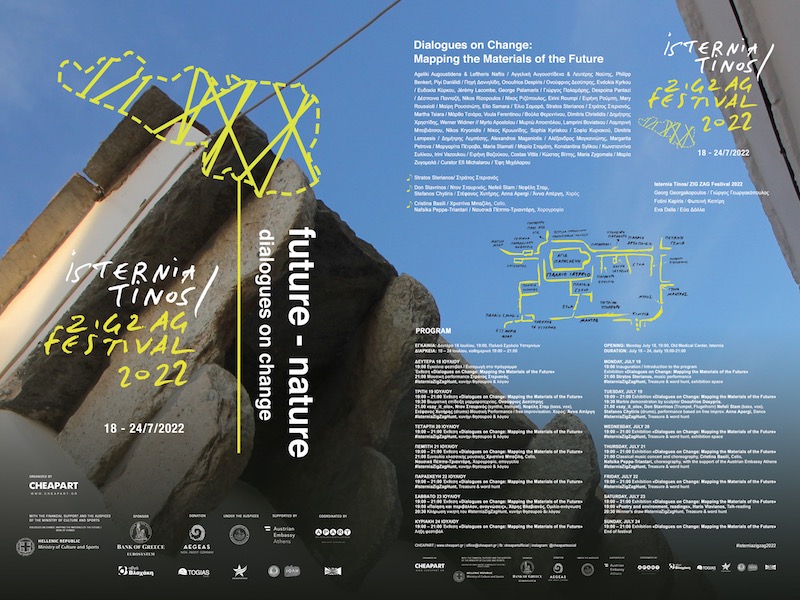"Civilization and the life of nations are governed by the same laws as prevail throughout nature and organic life."
Ernst Haeckel
The ancient Greek conception of the four basic elements—Air, Earth, Fire, Water—dates back to the pre-Socratic era, and was maintained throughout the Middle Ages until the Renaissance, deeply in�uencing European thought and culture. One of the earliest ontologies has the fundamental forces of the universe to be the four basic elements. By combining these elements and having them interact with one another, all materials emerge both as immaterial (invisible) and material (visual) objects of our Universe.
Modern science, on the other hand, does not claim the four elements as the material basis of the physical world. The atomic theory, leaving behind early philosophical thoughts and latter misconceptions and false beliefs, classi�es atoms into more than a hundred chemical elements that form chemical compounds. Solids, liquids, gas, and plasma, however, are similar to the classic elements of Air, Earth, Fire, and Water.
In the history of art one encounters numerous allegorical re-presentations of the four elements. Similar to planets or days of the week, the four elements have been associated with mythological deities. For example, the earth is symbolized by Kyveli / Rhea, water by Poseidon, air by Hera, and �re by Zeus. Artists borrow references from these elements to develop an environmental toolkit, an artistic habitat.
The term ökologie was introduced in 1866 by the German biologist Ernst Heckel, deriving from the Greek words oikos + logos which literally means “the study of the natural house-(oikos)”.
Ecology was not always synonymous with the environment, environmentalism, or natural history. It is more relative to evolutionary biology, genetics, and ethology, explaining the mechanisms behind biodiversity in response to the ecosystem. The environment of any living organism is the proximate or extended area that affects its living conditions. Between environment and ecology there can be interaction, exchanges of matter, energy or information.
«Dialogues on Change: Mapping the Materials of the Future»
July 18 - 24, 2022
Group exhibition, Old Medical Center, Isternia
Outdoor exhibition, interventions and public space-installations in various locations within Isternia
Participating artists:
Ageliki Augoustidena & Leftheris Naftis, Philipp Benkert, Piyi Daniilidi, Onoufrios Despiris, Evdokia Kyrkou, Jérémy Lacombe, George Palamaris, Despoina Pantazi, Nikos Rizopoulos, Eirini Roumpi, Mary Roussioti, Elio Samara, Stratos Sterianos, Martha Tsiara, Voula Ferentinou, Dimitris Christidis, Werner Widmer/ Myrto Apostolou, Lamprini Boviatsou, Nikos Kryonidis, Sophia Kyriakou, Dimitris Lempesis, Alexandros Maganiotis, Margarita Petrova, Maria Stamati, Konstantina Sylikou, Irini Vazoukou, Costas Vittis, Maria Zygomala/ Curator E� Michalarou.
«Book of Change»
2022 Cultural Events and Tours
#IsterniaZigZagHunt
Verses from poems related to the enviroment presented via QR codes create a path of discovery within Isternia, concluding in a prize winner's draw and at the exhibition space.
Marble demonstration
Isternian sculptor
Onoufrios Desypris guides us through his workshop and demonstrates traditional sculpting techniques.
Talk/reading«Poetry and environment, readings»
Haris Vlavianos Poet-translator, essayist, professor of Political History/ International Relations at the The American College of Greece.
Digital Collection of artwork and texts Artists, people of the arts and culture suggest a new approach to everyday life, contributing with their works and texts to a collection of online cultural material.
Sustainable kitchen the public becomes acquainted with exquisite secrets of the local kitchen and natural ingredients of Tinos, through a series of video demonstrations by the owners of the two taverns of Isternia.
Anna Rigou introduces the Tinian Artichoke, explaining how this favorite legume is fi�lled with stu�ffing.
Kyrillos Paraskevas provides insight on local meats and his famous recipe for goat in parchment paper.
Panagiotis Agathos from Corfu who fell in love and moved permanently to Isternia, guides us to his magical vegetable garden which overlooks the Aegean.
Nights of Classical and Contemporary music
Series of songs written during the years of “confinement”. The songs are based on traditional music forms and rhythms, yet interpreted with electric instruments, loops, effects-pedals with strong experimental/improvisational elements enorchestrated in a musical psychedelic performance.
Music:
Stratos Sterianos, Lyrics:
Elena Hadjisavva/ Stratos Sterianos
«say_it_olo»
A spark of copper on wood. Back to the roots.
Don Stavrinos (synths, trumpet),
Nefeli Stam (bass, vox) and
Stefanos Chytiris (drums)
three artists with multiple collaborations and side projects, in one performance based on free improv.
Anna Apergi, Dance
Christina Basili, Cello,
Nafsika Peppa-Triantari, Choreography and poem recitation of "The poison-�ower", John Boyle O'Reilly.
With the support of the Austrian Embassy Athens
Music performance by
Timotej Kosovinc, composer and guitarist, presenting compositions from his CD “The Good Moment”
Special guest: Cellist
Cristina Basili.
Isternia Tinos/ Zig Zag Festival 2022 | Future-Nature, Dialogues on Change
Program Directors: Georg Georgakopoulos, Fotini Kapiris, Eva Dallas
Organised by: CHEAPART
With the �financial support and under the auspices of: Hellenic Republic, Ministry of Culture and Sports (Dialogues on Change)
Under the auspices of the Municipality of Tinos
Support/ collaboration: Isternia President, Mr. Iakovos Malakates
Sponsor: National Bank of Greece
Donor: Non-Pro�fit Civil Company, AEGEAS
Supported by: Austrian Embassy Athens
Coordinated by: APART
Transportation sponsor: TOGIAS Travel, Golden Star Ferries
Breakfast sponsor: Vlachakis Eggs
Sponsor with: Mamos Beer, Ioli Water Sponsor
Communication sponsor: dreamideamachine
Discovering Isternia
Isternia, the whitewashed village perched on the mountain at an altitude of 310 meters, is located in the western part of the island, known in Tinos as “Exo Meria”. It is situated 25 km from the port of Tinos and 2 km from Pyrgos, the birthplace of Giannoulis Halepas (Yannoulis Chale- pas, 1851 – 1938, Greek sculptor and signi�cant representative of Modern Greek art). Isternia is the second most important center of marble sculpture in Tinos after Pyrgos, from which many great marble sculptors emerged (G & I. Vitalis, L. Sohos, L. Lameras).
 «Living marble/ Beseelter Marmor», exhibition view
«Living marble/ Beseelter Marmor», exhibition view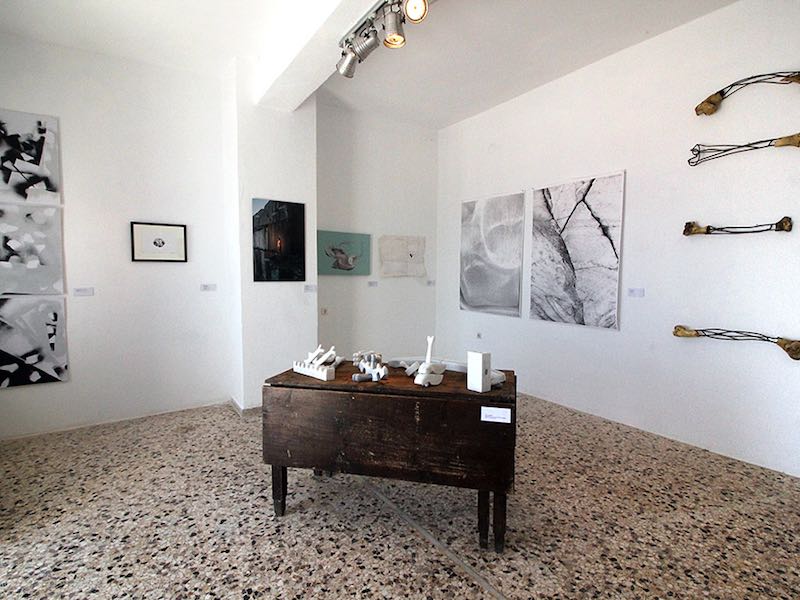 «Living marble/ Beseelter Marmor», exhibition view
«Living marble/ Beseelter Marmor», exhibition view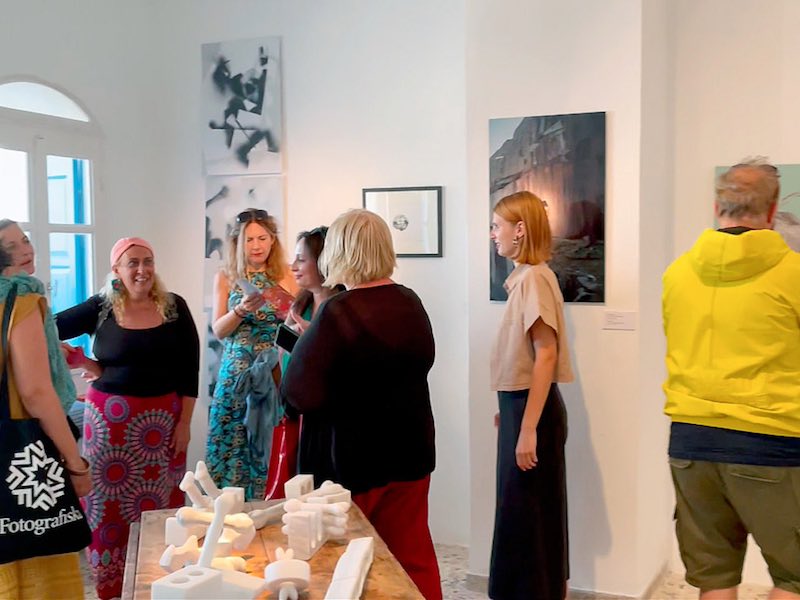 Opening of the exhibition «Living marble/ Beseelter Marmor»
Opening of the exhibition «Living marble/ Beseelter Marmor»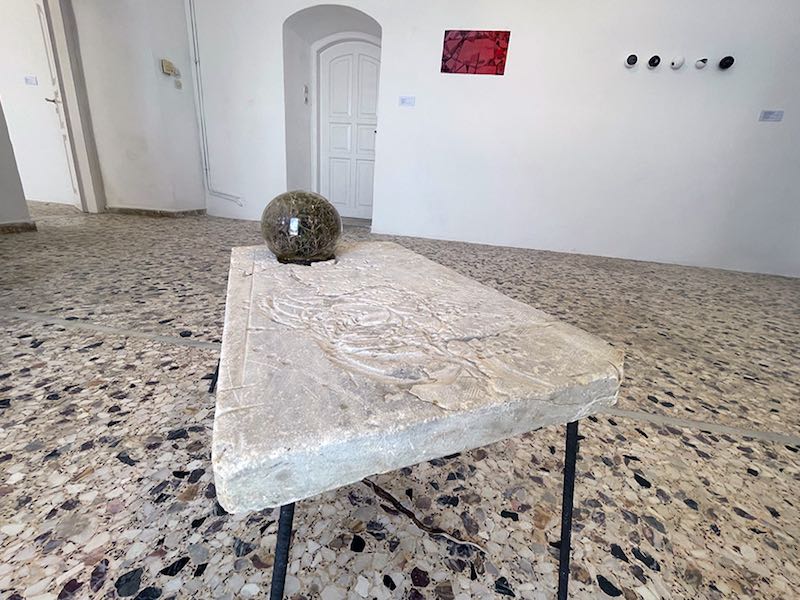 «Living marble/ Beseelter Marmor», exhibition view
«Living marble/ Beseelter Marmor», exhibition view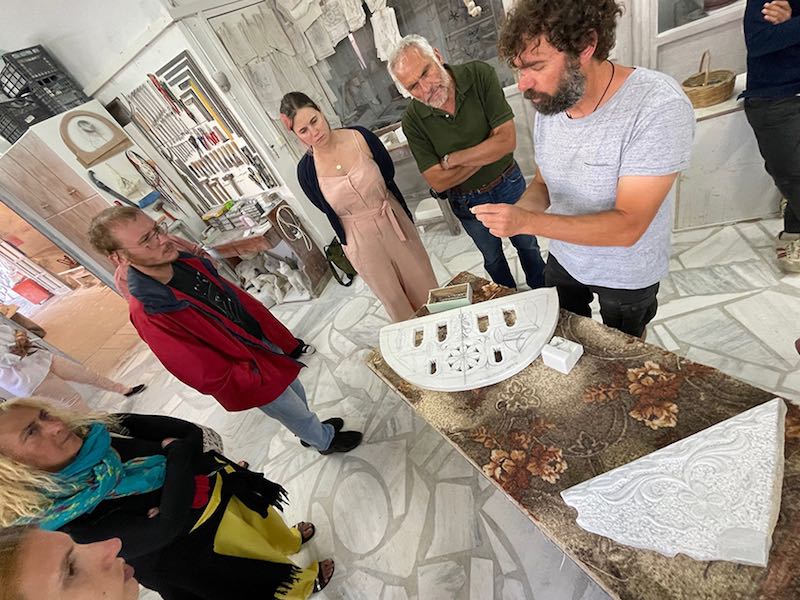 Isternian sculptor Onoufrios Desypris demonstrates traditional techniques
Isternian sculptor Onoufrios Desypris demonstrates traditional techniques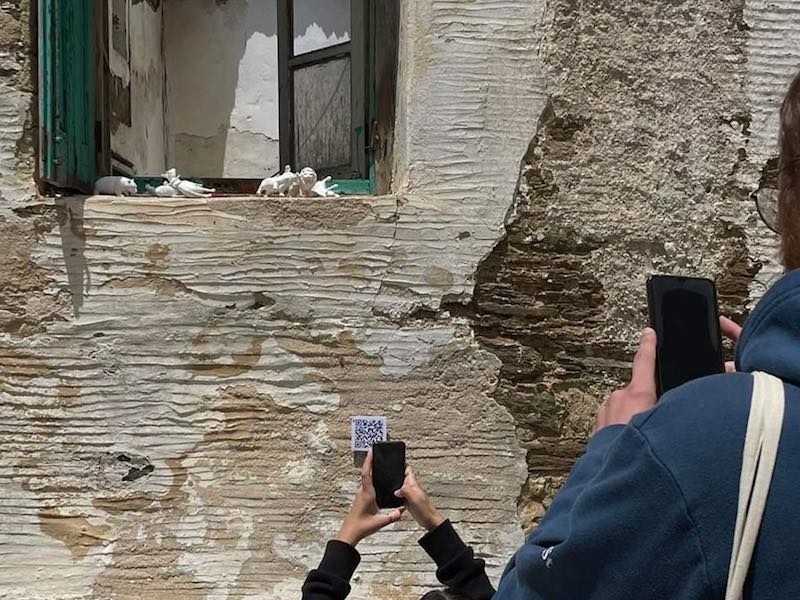 Discovering poetry and art in the natural landscape of Isternia
Discovering poetry and art in the natural landscape of Isternia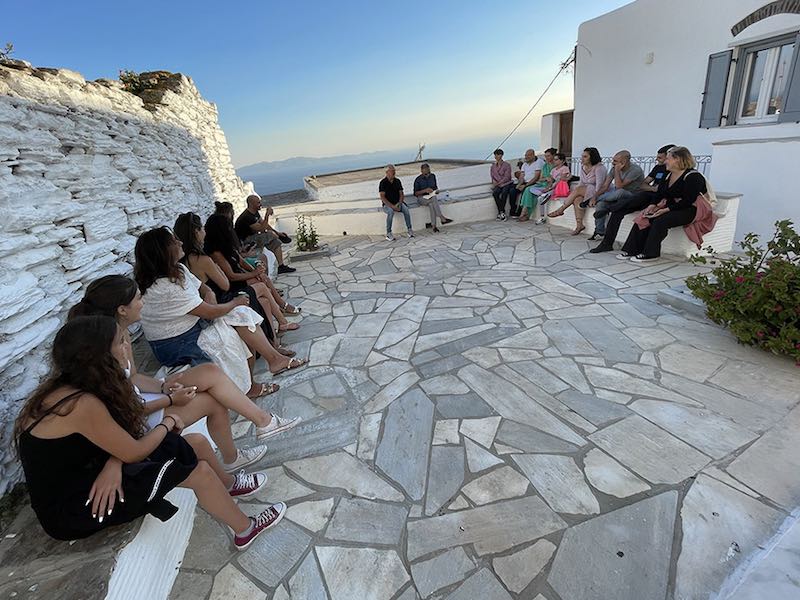 Reading by Haris Vlavianos at Sochos square
Reading by Haris Vlavianos at Sochos square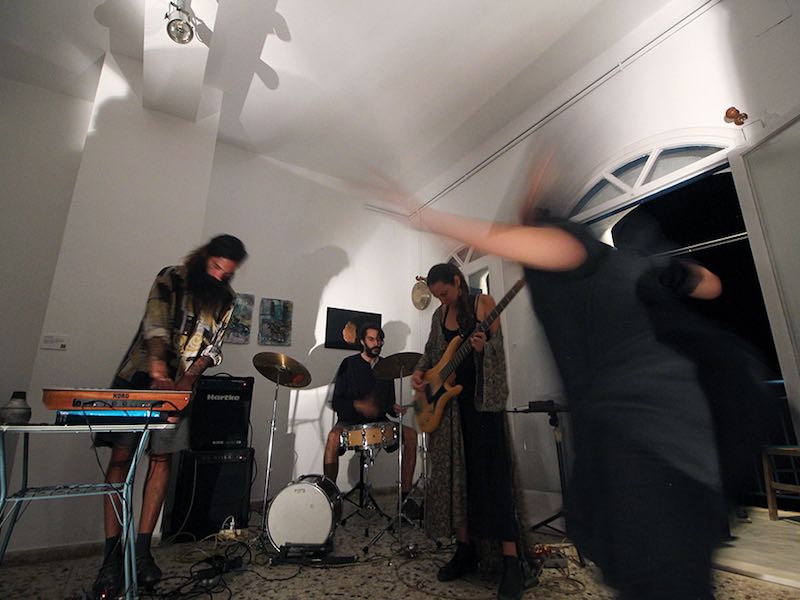 Improvisation, Don Stavrinos, Nefeli Stam, Stefanos Chytiris, Anna Apergi
Improvisation, Don Stavrinos, Nefeli Stam, Stefanos Chytiris, Anna Apergi Classical music with the internationally renowned cellist Cristina Basili
Classical music with the internationally renowned cellist Cristina Basili
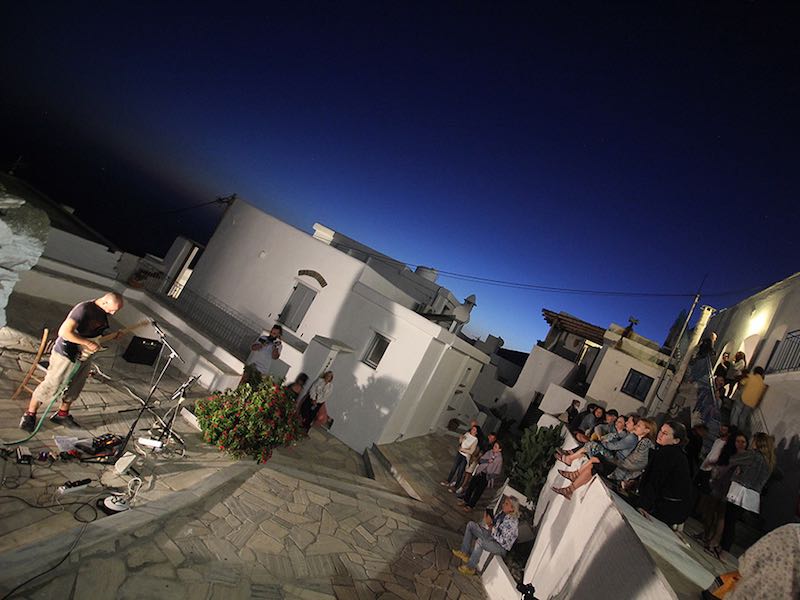 Stratos Sterianos interprets traditional music at Sochos square
Stratos Sterianos interprets traditional music at Sochos square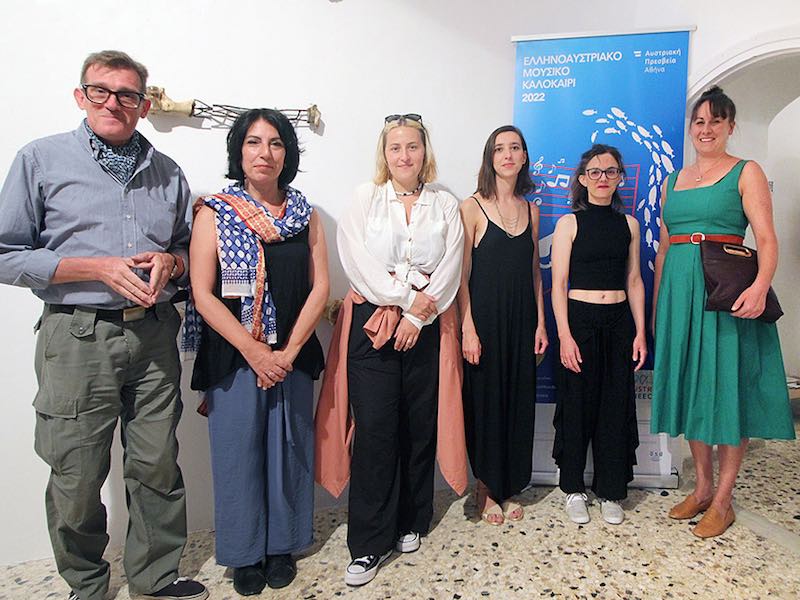 Isternia Tinos/ Zig Zag Festival 2022 photo with the Austrian Embassy Athens
Isternia Tinos/ Zig Zag Festival 2022 photo with the Austrian Embassy Athens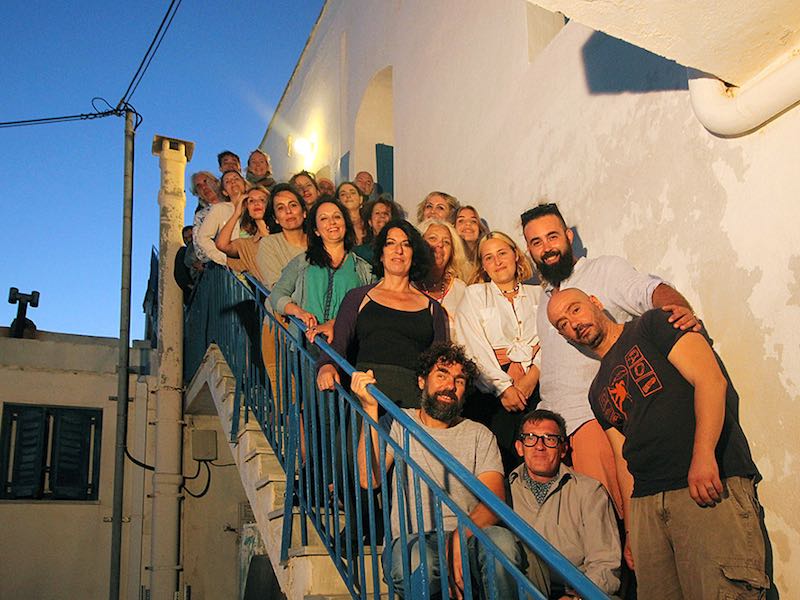 Isternia Tinos/ Zig Zag Festival 2022 Artists, Curators and Organisers
Isternia Tinos/ Zig Zag Festival 2022 Artists, Curators and Organisers

